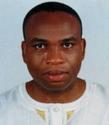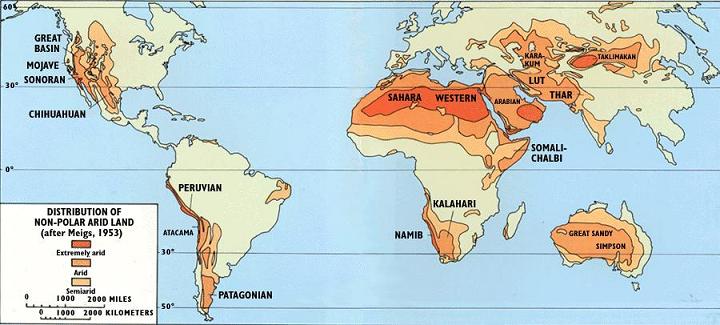He conceived and organized the ‘African Mission to Mars’ conference, his research team pioneered the use of space-based technologies for water-borne disease prevention, he is a respected neuroscientist and neurosurgeon. He is also the Chairman, International Institutes of Advanced Research and Training, Chidicon Medical Center located in Owerri, Imo State, Nigeria. Prince Dr Philip C. Njemanze has been an inspiration to many and here is his interview as conducted by ‘i initiative’.
1. Can you tell us about yourself and how you got into space activities?

Prince Dr Phillip C. Njemanze
I must say that I have been fascinated by Space from childhood, right from the time I started reciting ‘Twinkle, twinkle little star’ with my Dad at about age 5. However, my first real encounter with Space medical research was in the Soviet Union in 1983, as I worked as a medical student researcher at Rostov State Medical Institute Order of Friendship in Rostov-on-Don Russia with the famous physiologist, Prof Danilov of happy memory. It was on cardiovascular research using Sphygmography for Space-based applications, a work that won the All Soviet Students’ Scientific Research of the Soviet Academy of Science named after Academic Orbeli in Erevan, USSR. I continued my student research at the Institute of Neurocybernetics in Rostov-on-Don Russia under Prof Kogan on tracing pain pathways as a means of developing neurocybernetic control systems suitable for space research.
After my medical school in Russia in 1986, I went for postgraduate studies in Germany, and studied neurosurgery which led me into research of cerebrospinal fluid flow dynamics using magnetic resonance imaging.
Njemanze PC, Beck OJ (1989) MR-gated intracranial CSF dynamics: evaluation of CSF pulsatile flow. AJNR American Journal of Neuroradiology, 10 (1), 77-80
The invention of transcranial Doppler about this time by Rune Aaslid meant that I could continue my research on cardiovascular changes associated with brain blood flow specifically the use of Fourier Analysis of the Cerebrovascular System by 1991
Njemanze PC, Beck OJ, Gomez CR, Horenstein S (June 1991) Fourier analysis of the cerebrovascular system, Stroke. Journal of Cerebral Circulation, 22 (6), 721-6
Just about this time I felt that the major problems associated with Space were the cardiovascular effects that manifest in syncopal episodes. However, not much was known about cerebral blood flow (CBF) changes associated with syncope at that time. So in 1991 I published the first observations of cerebral blood flow changes during syncope for aerospace applications
Njemanze PC (June 1991) Transcranial Doppler evaluation of syncope: an application in aerospace physiology. Aviation, Space, and Environmental Medicine, 62 (6), 569-72
I went further to identify that 50% reduction of cerebral blood flow velocity (CBFV) was associated with syncope
Njemanze PC (December 1992) Critical limits of pressure-flow relation in the human brain, Stroke. A Journal of Cerebral Circulation, 23 (12), 1743-7
In these series some had no drop in blood pressure but they fainted, I then identified that there was cerebral syncope which was not associated with blood pressure drop
Njemanze PC (April 1993) Cerebral circulation dysfunction and hemodynamic abnormalities in syncope during upright tilt test. The Canadian Journal of Cardiology, 9 (3), 238-42
It then raised the question on what was mediating the drop in CBFV if it was not the classical Bezhold-Jarish Reflex, I therefore suggested another mechanism that did not involve cardiac reflexes or cardiopulmonary reflexes.
Njemanze PC (March 1993) Isoproterenol induced cerebral hypoperfusion in a heart transplant recipient, Pacing and Clinical Electrophysiology : Pace, 16 (3 Pt 1), 491-5
Njemanze PC (1992) Cerebrovascular dysautoregulation syndrome in heart-lung transplant recipient. Journal of Cardiovascular Technology, 10, 227-232
With these activities and those by others, the Neurocardiology applications for Space were firmly established. Then I established a company called Chidicon Inc. USA in Missouri and in a joint contract with McDonnell Douglas Aircraft Company we embarked on research on the CBFV changes associated with use of COMBAT EDGE G-Suit and the water suit Atlantis Worrior
Njemanze PC, Antol PJ, Lundgren CE (May 1993) Perfusion of the visual cortex during pressure breathing at different high-G stress profiles. Aviation, Space, and Environmental Medicine, 64 (5), 396-400
The question was now what arose first?, is it the CBFV changes?, or is it the blood pressure changes?, so one would know which sensor would be most effective to use in avionic systems. I then identified that the first changes were associated with CBFV by as much as a few seconds.
Njemanze PC (April 1994) Cerebrovascular dysautoregulation syndrome complex–brain hypoperfusion precedes hypotension and cardiac asystole. Japanese Circulation Journal, 58 (4), 293-7
I then proceeded to invent the Physiologic G-Suit Modulator (US Par 5121744), which senses the impending loss of consciousness and transfers the autonomy decision making to the autopilot to avert an accident.
Njemanze Philip C. (2005) Asymmetry of Cerebral Blood Flow Velocity Response to Color Processing and Hemodynamic Changes During -6 Degrees 24-Hour Head-down Bed Rest in Men. Journal of Gravitational Physiology, 12 (2), 2005
I then improved on this invention by adding a system that detects CBFV correlates of mental performance (US Pat 6390979). NASA recently funded a system to accomplish these objectives.
In 1995, I responded to a NASA International Announcement of Opportunities for experiments to study the Brain in Space, mandated by the US Congress, called Neurolab. I was successful as one of the NASA Principal Investigators chosen from 8 countries (USA, Japan, Italy, Germany, France, Nigeria, Netherlands and Canada). My proposal was on the study of the blood flow of the visual cortex in astronauts. On completion of my involvement in the Neurolab in Houston Texas, an opportunity arose through the Cooperative project of the Center for Health Applications of Aerospace Related Technologies (CHAART) at NASA Ames Research Centre and the Third World Foundation. Though this I became the first international recipient of the award to use Space-based Technology to improve the health of people in developing countries. I wrote an overview of the potential applications of aerospace technologies.
Njemanze PC. (1996) Satellite technology and aerospace related warning systems (STARWARS) for disease control: strategy for disease prevention in developing countries of Africa, South America and Asia-Pacific Region. Japanese Journal of Aerospace and Environmental Medicine, 33, 17-130
To develop this area, I founded the Institute of Space Medicine at Chidicon Medical Center, Owerri, Nigeria. Our specific interest was to develop the application of geographic information system technologies to prevention of water-borne infections in Nigeria. This collective effort of our team led to the development of the first GIS platform for planning water resources.
Njemanze PC, Anozie J, Ihenacho JO, Russell MJ, Uwaeziozi AB (September 1999) Application of risk analysis and geographic information system technologies to the prevention of diarrheal diseases in Nigeria. The American Journal of Tropical Medicine and Hygiene, 61 (3), 356-60
However, my principal area of interest remains Neuroscience in Space. My major interest is what changes in brain cognitive function in Space, and what might be the gender differences. ¨
Specifically I asked what happens to facial perception, motor processing, and color processing in Space.
Facial perception
Njemanze PC (2004) Asymmetry in cerebral blood flow velocity with processing of facial images during head-down rest. Aviation Space and Environmental Medicine, 75 (9), 800-805
Motor processing
Njemanze PC (July 2002) Cerebral lateralization for motor tasks in simulated microgravity. A transcranial Doppler technique for astronauts. Journal of Gravitational Physiology, 9 (1), 33-34
Color processing
Njemanze Philip C. (2005) Asymmetry of Cerebral Blood Flow Velocity Response to Color Processing and Hemodynamic Changes During -6 Degrees 24-Hour Head-down Bed Rest in Men. Journal of Gravitational Physiology, 12 (2), 2005
2. What are your areas of research interest and which interesting projects are you currently working on?
I am currently developing non-invasive neurodiagnostic methods for detecting neural processes of memory, feeding, and addiction in the Space environment.
3. As an African with an interest in space activities, what were the challenges you faced?
The major obstacle is lack of funding. I had to establish a personal foundation and raise money from personal sources to support the research at my lab for close to two decades, and I have no regrets. The challenges are still persisting but the outcome thus far has surpassed all my initial expectations. Glory be to God.
4. Did you ever feel that space was too impractical for the African setting?
Not at all, in actual fact Africa needs Space research more than the industrialized World, because the solutions for communication, health, agriculture and others will be attained faster with Space-based Research. That was why in 22-23 Oct 2007, I initiated and organized the first Mission to Mars: The African Perspective in Owerri, Imo State, Nigeria. This achieved many milestones, such as Cassava Research for Mars Mission with JAXA, Japanese Space Agency, Climate Change Theory, Cognitive Neuroscience for Mars Mission and others. Today Nigeria is planning water resources using Space-based GIS and Advanced Risk Analysis Systems.
5. From your experience in space activities which of the things you have came across do you wish you can replicate back in Africa as being of necessity for development?
As you can see from my descriptions, the initiative for disease control actually has its origins in Africa, and has become one of the most successful Space-based initiatives that are finding applications in Africa and other developing countries. In a recent commentary on ‘Water Contamination: The Way Forward’ in the March 2009 Issue of the Indian Journal of Medical Research, I highlighted that the greatest achievement of the next decade and attainment of Millennium Development Goals will be accomplished using Space-based technologies of GIS and Risk Analysis for prevention of water-borne infections. Which I humbly point out was first implemented in literature by our team in Nigeria in 1999.
6. What advice do you have for young Africans seeking to choose a career path in Space-related activities? How can they keep in touch with you and your activities?
Young Africans must be bold and courageous to choose Space Research. As far as they remain true to their calling and sustain interest with hard work, Space will not even be their limit. For those wanting to read about our efforts in Space research please visits us at http://www.chidicon.com.


































